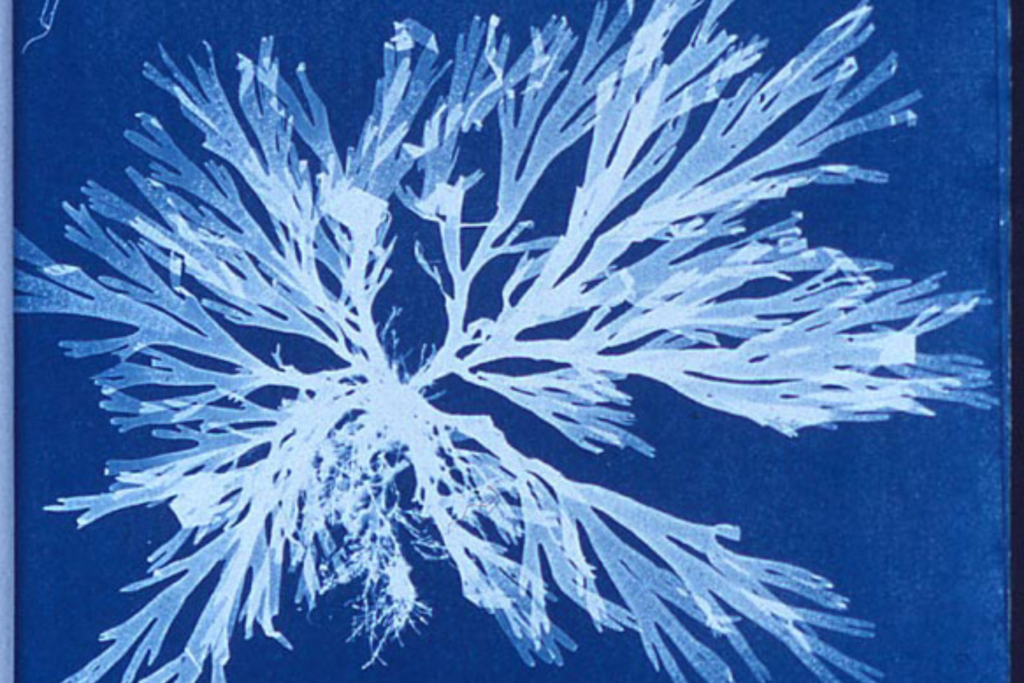Catching the Shadow: Cyanotype | A STEAM method described by Florian Theilmann, Dr. rer. nat., University of Education Weingarten

In the mid 19th century, the British polymath Sir John Herschel discovered a chemical reaction triggered by light. The reaction used harmless substances and its result was a blue dye of Prussian blue. While Herschel envisaged the use of his invention for detection of the then still hypothetical infrared radiation, hs friend Anna Attkins used it in a different and innovative way: She put plants on paper covered with the light sensitive substance and placed it into the sunlight. The result was a blue coloration except for the areas where the plants threw their shadow (with some transitional effects). The practice was called cyanotype (from the involvement of ferricyanide) and Attkins produced a pioneering collection of reproductions from algae and other plants (left). Later, the technique was also used for the reproduction of technical drawings, the proverbial blue print.
In our course on “Light, Shadow, and Colour”, we used this method as an activity for utilizing some of the laws and regularities of shadows. Students were equipped with the chemicals and papers and encouraged to produce their own cyanotypes on the footsteps ot Anna Attkins. First, we demonstrated the technique with some biological objects and showed how the follow-up procedure works (basically it is just and drying):

The results were multifarious ‒ we had flowers, abstract arrangements of objects, artful contours, or an illustration for a pirate story produced together with the kids of the respective student.




